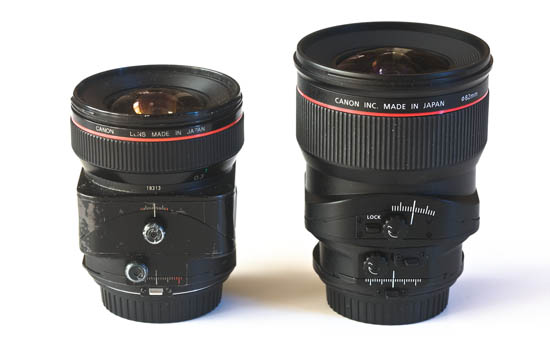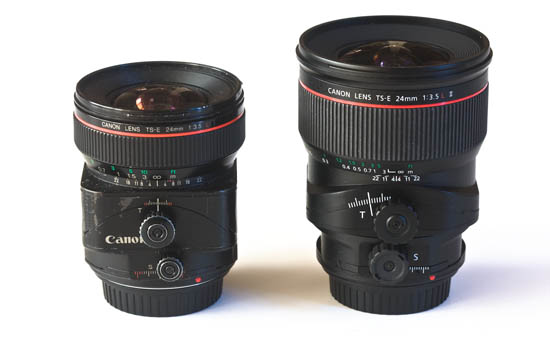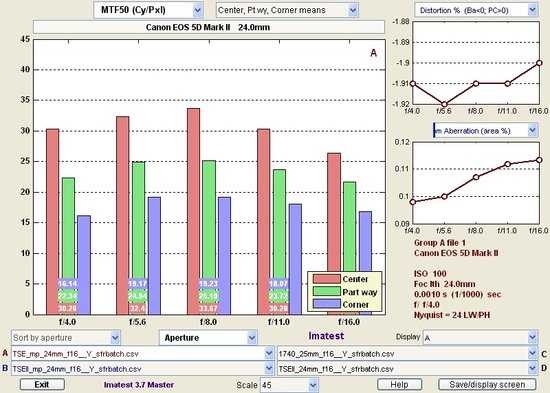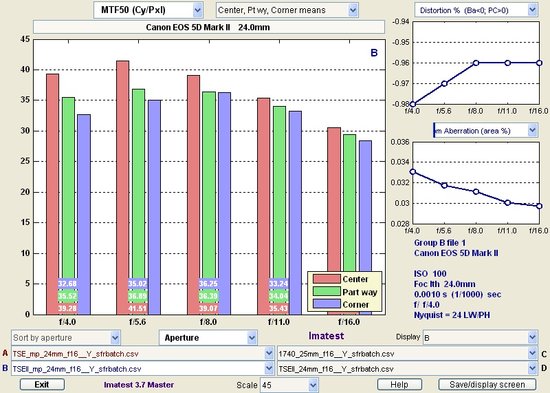Canon 24 TSE-II v 24 TSE, a comparative review
No Comments
About a decade ago, I switched from Nikon to Canon. I was attracted, among other things, by the availability of a 24mm tilt and shift (T/S) lens, which brings to 35mm some of the controls available to the large format camera photographer. While it has served me well, its T/S functions making it possible to create higher quality images than would have been possible with a regular lens, it had a number of shortcomings. My main gripe was that there wasn’t enough of an image circle to shift fully the lens in vertical orientation. I also wished that the image quality was better, since when used as a regular lens, it wasn’t even as sharp as my zooms, and suffered from serious chromatic aberration.
Last year, maybe challenged by Nikon’s new great 24 T/S lens, Canon introduced a revision of their own 24 T/S lens. It is in fact an entirely different lens, physically quite similar to the Nikon. The goal seems to have been to produce a high performance lens, regardless of size and weight, which are all significantly larger than the previous version.


Did Canon deliver on their promise of a high-performance lens ? As the Imatest (best way to measure lens performance, see details here) charts below show, the answer is an unqualified yes ! The new lens is impressively sharp even wide open, with corners almost as good as the center, which is extremely rare for a wide angle lens. It boasts a significantly larger image circle, which now allows a full 12mm shift in both horizontal and vertical orientation. In fact, it has been reported that the image circle is so large that the new lens can be used with a medium format camera. Controls are much improved. The ability to use independent axis for tilt and shift (unique to the Canon design) is a nice bonus.
Both lens are manual focus with focus confirmation, automatic aperture, and a solid all-metal construction. The table below summarizes the differences I have found between the two lenses. There are so many improvements that I feel that the new lens is well worth its price, despite it being almost twice as much the price of the old lens.
| 24/f3.5L TSE | 24/f3.5L TSE II (2009) | |
|---|---|---|
| T/S axis | One rotation mechanism for both T and S. By default T and S axis are perpendicular. This can be changed to parallel by dissassembling rear of lens (requires a sharp Phillips screwdriver). | Unique two independent rotation mechanisms, one for T and S, one for T, so each of them can be placed at an arbitrary position. |
| T/S locks | Tiny friction knobs for T and S, easily jammed (I’ve had to use pliers). Lack of positive lock for T can ruin images. | Larger friction knobs with deeper grooves for T and S. Switch with zero-detent for T. |
| Maximum Shift | 11mm along short side, 7mm along long side | 12mm along both sides. Enough shift to place base of buildings near bottom of frame even in vertical orientation. |
| Maximum Tilt | 8 degrees | 8.5 degrees |
| Close Focus |
1 ft./0.3m 0.14x magnification |
0.69 ft./0.21m 0.34x magnification |
Sharpness | less sharp than 24-70/f2.8, 24-105/f4, 17-40/4, 45 TSE |
significantly sharper at all apertures, in particulars in corners
sharper than 24-70/f2.8, 24-105/f4, 17-40/4, 45 TSE |
| Distortion | barrel 1.9% | barrel 0.96% |
| Chromatic Aberation | marked in areas of strong contrast near edges (0.1) | not noticeable (0.03) |
| Other | Furthest focus is infinity | Focuses past infinity. Newer coatings (for better ghosting and flare resistance). Circular aperture (for better highlights/bokeh). |
| Lens construction | 11 elements, 9 groups | 16 elements, 11 groups |
| Filter size | 72mm | 82mm |
| Size DxL | 3.1 x 3.4 in./78 x 86.7mm | 3.5 x 4.2 in./88.5 x 106.9mm |
| Weight | 20.8 oz./570g | 27.5 oz./780g |
| Price (06/2010) |
$1200 street, $1900 list (discontinued) look for a used @ amazon |
$2100 @ BH $2100 @ amazon (List: $2500) |



